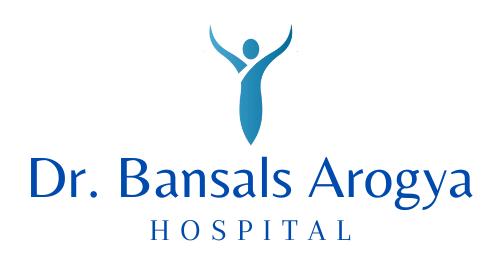Foot and Ankle Conditions
Medical Laboratory And Specialists Services
Introduction
Pediatric foot and ankle conditions are a broad category of medical concerns that can affect
children’s mobility, comfort, and overall well-being. These conditions encompass a range of issues, from congenital deformities like clubfoot and metatarsus adductus to functional concerns like flatfeet and toe walking. Early recognition and appropriate management of these conditions are essential for ensuring that children can lead active, pain-free lives. Here, we will explore some of the most common pediatric foot and ankle conditions and discuss their treatments.
1. Clubfoot
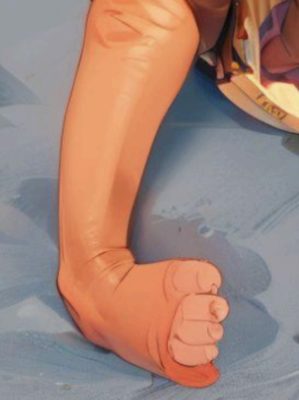
Clubfoot, also known as congenital talipes equinovarus, is a relatively common congenital deformity that affects the positioning of a child’s foot or feet. Children with clubfoot are born with one or both feet turned inwards and downwards, making it challenging for them to walk or wear regular shoes. Early diagnosis and intervention are crucial to ensure the best outcome. Clubfoot can be idiopathic, atypical, or syndromic, and treatment depends on the type of clubfoot. Clubfoot has a high rate of relapse and must be followed up long term to catch early recurrence. Even after treatment compliance, recurrence is known to occur and may warrant intervention at a later date.
Non-Surgical Treatment: The gold standard for non-surgical treatment of clubfoot is the Ponseti method. This approach involves gentle manipulation and casting to gradually correct the foot’s position. Once a satisfactory foot position is achieved, the last step is to correct the tight heel cord, which may be done with a tenotomy. After the correction, the child is fitted with a foot abduction brace to maintain the corrected position and promote proper development. The child wears the foot abduction brace till the age of 3-4 years.
Surgical Treatment: Surgical intervention is reserved for cases where non-surgical methods do not yield the desired results. It may involve a minor procedure to lengthen the Achilles tendon or, in more complex cases, extensive surgery to reposition bones and tendons.
2. Congenital Vertical Talus
Congenital vertical talus (CVT), also called rocker bottom foot, is another congenital foot
deformity that affects a child’s ability to walk and maintain proper foot arches. Unlike
clubfoot, CVT presents with an upward and backward arch of the foot, making it resemble a
rocker bottom. CVT has a high rate of relapse and must be followed up long term to catch
early recurrence.
Non-Surgical Treatment: Non-surgical treatment options for congenital vertical talus are
limited. After the initial diagnosis, trial of casting in children is done. Serial casting for deformity correction is done with plasters being changed on a weekly basis. Children are often fitted with orthotic devices like ankle-foot orthoses (AFOs) to support the foot and maintain the corrected position. However, these measures are typically used in conjunction with surgical intervention.
Surgical Treatment: Surgical treatment is the primary approach for congenital vertical talus.
It can be done with serial casting, thereby reducing the quantum of surgery required. Reduction and pinning of the talo-navicular joint in the corrected position, followed by casting can be done in cases where the joint alignment is maintained. However, the treatment of congenital vertical talus can involve surgical procedures including but not restricted to tendoachilles lengthening, dorsal release of tendons or an extensive soft tissue release. The procedure involves repositioning the bones and tendons to correct the deformity. Post-surgery, physical therapy and orthotic devices are essential to maintain proper alignment and function.
3. Flatfeet
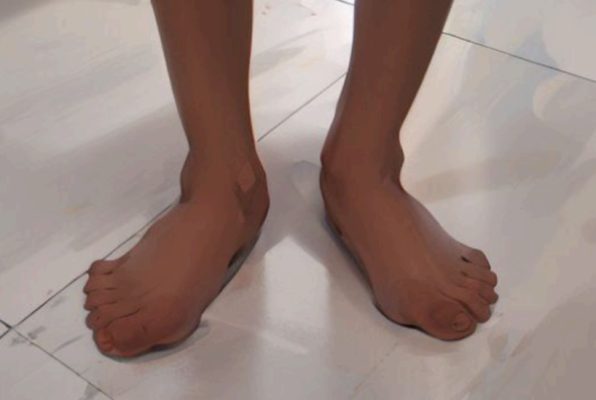
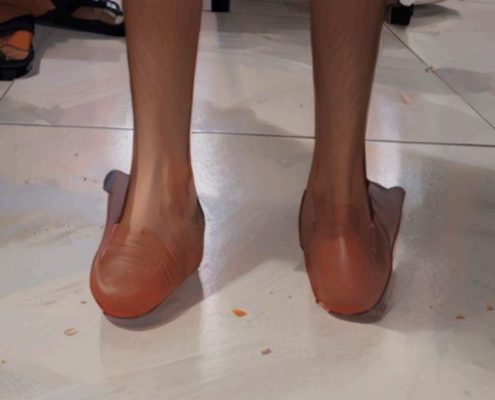
Flatfeet, or pes planus, is a common paediatric foot condition in which the arches of one or both feet do not develop as expected. Most children have flatfeet in early childhood, but it typically resolves as they grow. Some cases, however, persist and may lead to discomfort or pain. Flatfoot can be flexible or rigid. Treatment of flatfoot is dependent on the patient’s symptoms and underlying condition.
Non-Surgical Treatment: Non-surgical treatment options for flatfeet focus on alleviating discomfort and promoting proper development. Custom orthotics or shoe inserts, along with exercises to strengthen the muscles that support the arch, are commonly recommended. Proper footwear with adequate arch support is also crucial.
Surgical Treatment: Primary patients who undergo surgery are – symptomatic flexible flatfeet, rigid flatfeet, and syndromic children (ex. Cerebral Palsy, Arthrogryposis). Surgical intervention for flatfeet is relatively rare and is typically reserved for severe cases that do not respond to non-surgical treatments. Surgical options may involve realigning or fusing specific foot bones to create or restore the arch.
4. Toe Walking
Toe walking is a gait pattern in which a child consistently walks on their toes rather than their whole foot. It can be associated with various conditions, including cerebral palsy and autism, but can also occur without an underlying disorder.
Non-Surgical Treatment: Non-surgical treatments for toe walking are typically the initial approach. Physical therapy plays a central role in these treatments, focusing on stretching and strengthening the calf muscles. Orthotic devices, such as night splints, may be recommended to encourage flat-footedness while sleeping.
Surgical Treatment: Surgical intervention is only considered for severe and persistent cases. Procedures like tendon lengthening or release may be necessary to address overly tight calf muscles contributing to toe walking.
5. Metatarsus Adductus
Metatarsus adductus is a condition in which a child’s forefoot is turned inward relative to the hindfoot. The foot looks to be bean shaped. It can make walking difficult and cause discomfort in some cases.
Non-Surgical Treatment: Non-surgical treatments are often successful in correcting metatarsus adductus. Stretching exercises and orthotic devices like splints or specialized shoes can be employed to address the condition. Serial casting may also be used for more
severe cases.
Surgical Treatment: Surgical intervention is rare and is usually reserved for cases where non-surgical methods fail to correct the deformity.
6. Congenital Toe Deformities
Congenital toe deformities encompass a wide range of conditions, such as webbed toes, extra toes, or crooked toes. These deformities can be minor or more complex, but they can all affect a child’s comfort and self-esteem.
Non-Surgical Treatment: Non-surgical approaches vary depending on the specific congenital toe deformity. Some milder cases may benefit from physical therapy or splinting to encourage proper development and function.
Surgical Treatment: Surgical correction is often necessary for more complex congenital toe deformities, including webbed toes or extra digits. The surgical procedures aim to release, realign, or reconstruct the affected toes.
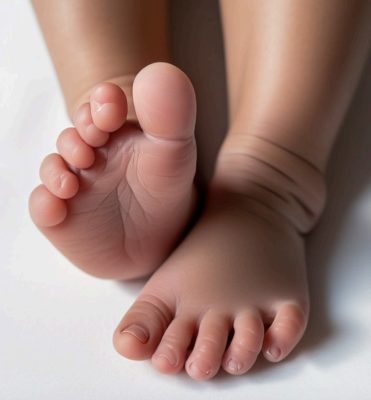
(Polydactyly – Six toes seen in the right foot of the child, as compared to the left foot)

(Hallux varus in a 2 year old child – note the great toe deviated inwards and increased web space between the 1st and 2nd toes)
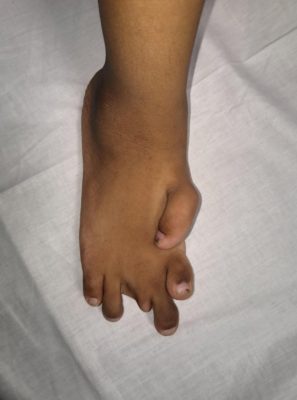
(Congenital toe deformity in a child)
Why should you opt for it?
The treatment of pediatric foot and ankle conditions encompasses both surgical and non-surgical approaches, tailored to the specific diagnosis and severity of the condition. Early diagnosis and intervention are crucial in managing these conditions effectively, and parents and caregivers should work closely with paediatric orthopaedic specialists to determine the best course of treatment for their child. With the right treatments, most children can achieve proper foot and ankle development, enabling them to lead active and pain-free lives.
The aim of treatment in paediatric foot and ankle is to allow the child to walk free of pain on a plantigrade foot. Symptoms can range from pain while walking, difficulty in shoe-wear to inability to walk due to severe deformity. Treatment involves identifying the underlying cause of symptoms, and then formulating the appropriate plan. This might often involve casting, stretching or splinting followed by surgical intervention. Treatment depends on age of patient, severity of disease, underlying cause, as well as patient’s requirements.
Dr. Bansals Arogya Hospital, a leading healthcare institution renowned for its commitment to excellence in pediatric orthopaedics, has a rich history of expertise and experience in treating a wide range of pediatric foot and ankle conditions. With a dedicated team of experienced pediatric orthopaedic specialists and state-of-the-art facilities, Here at Dr. Bansals Arogya Hospital, we have consistently delivered top-tier care to children and their families. Our specialists have a deep understanding of the unique needs of young patients, ensuring that every child receives personalised and compassionate treatment. Treatment is tailored to the patient, their underlying condition and their symptoms.
Our commitment to advancing medical knowledge, coupled with extensive experience, makes Dr. Bansals Arogya Hospital a trusted institution for the diagnosis, treatment, and rehabilitation of pediatric foot and ankle conditions, ensuring that children receive the best possible care on their journey to improved mobility and quality of life.
